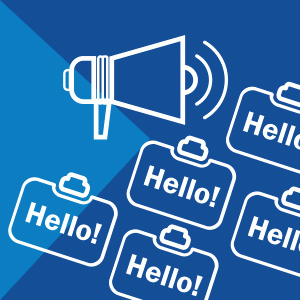 Exhibiting at trade shows is a big investment of time, money, and energy for small businesses. However, trade shows continue to be a popular, even growing, sales and marketing tool because they have a track record of producing measurable results.
Exhibiting at trade shows is a big investment of time, money, and energy for small businesses. However, trade shows continue to be a popular, even growing, sales and marketing tool because they have a track record of producing measurable results.
While prepping for and participating in trade shows can be challenging, the payoff in terms of renewing connections with customers, meeting promising leads and industry players, and showcasing your products or services can be invaluable. Here are five ways to make the most of your investment and boost your trade show ROI:
1 – Set Goals and a Budget
To be successful at a trade show, you need to know why you are choosing to exhibit and align your efforts with your small business sales and/or marketing goals. Determine up front if your objectives are focused more on increasing brand awareness, generating sales leads, or strengthening key industry relationships. Keep your goals specific and measurable. For example, decide how many new product orders or qualified leads you want to get each day or the number of new distribution channels you want to identify.
Do not overlook the budgeting step in your planning process. Many small businesses do not allocate enough money to marketing or, worse, spend it haphazardly. Preparing an itemized budget with flexibility built in helps you focus on even the minor details, allows you to see where your money is going, and gives you the leeway to cover unexpected expenses.
2 – Target the Right Shows
Before committing to a show, make sure the businesses and attendees are part of your target market. Ask the trade show promoters how many visitors are expected and the demographics and job titles of those attendees. If your goal is to sell product or services, you want to know that buyers will be attending. If you are looking to connect with potential business partners, it will be important to be in a room with company decision-makers.
Once you’ve committed to exhibiting at a trade show, make note of important deadlines such as when to provide details for marketing materials and show publications. You can start promoting your attendance to prospects and customers a month or two before the show. It’s also a good idea to carefully consider the list of exhibitors, speakers, and breakout sessions. Many successful exhibitors determine in advance who they want to connect with and contact them prior to the show to schedule meetings.
3 – Be Strategic with Your Booth
Everything about your booth should support your trade show goals. For starters, book your booth early so you can get a prime spot. A booth near the entrance ensures attendees will be fresh and energized when they pass by. To avoid last-minute surprises, review all of the details including the booth size and any display restrictions. Plan early on to dedicate enough staff to ensure that your team can take breaks and still keep the booth attended at all times.
Design your booth to include eye-catching graphics for building awareness as well as ample meeting spaces for selling and relationship building. For many businesses the most valuable outcome of trade shows is the leads they take in their booth. Create a lead collection and management system that will make it easy to capture the visitor data that matters most to your sales team.
Trade show exhibitors often integrate technology into their exhibit design. If tech is essential to connecting with your target market, plan how to best implement it in your booth and create appropriate content. Avoid using tech simply for effect; it should enhance your brand, support in-booth sales and marketing efforts, and make it easy for both staff and attendees to engage with each other.
4 – Use Promotions to Boost Results
Creating a strong brand is one of the most important things you can do for your small business. It goes without saying that one of the most critical aspects of preparing for a trade show is planning to have plenty of branded marketing materials on hand. This can include brochures, flyers, and spec sheets as well as promotional items like pens and tote bags. Remember to pack as many business cards as you think you can use. Despite the mobile applications that create and manage digital business cards, traditional paper cards remain an invaluable business tool.
When it comes to attracting attendees’ attention, particularly at large shows, interactive promotions and giveaways are becoming increasingly popular and effective. According to industry research, interactive games are one of the best attendee engagement tactics and one of the least used, giving you an opportunity to outshine competitors. Hosting a trade show game to educate booth visitors about your products in a fun way can increase traffic, help staff start conversations, and generate more leads and sales.
5 – Follow Up Fast
Despite the considerable investment of time, money, and energy, even the most experienced exhibitors often fail to follow up post-show. Your leads will lose their value over time, so get in touch quickly with each name in your database to build on the connection established at the show. Invite them to connect on LinkedIn, plan a meeting, or share additional information about your business. Then make sure your sales team follows up on the hottest prospects before their interest and memories fade.
Working Capital Financing is a few clicks away.
Apply online and get started today >
Summit Financial Resources specializes in working capital financing for small to medium-sized businesses that need increased cash flow. We provide working capital financing through invoice factoring, asset-based lending, inventory lending, and equipment financing.
